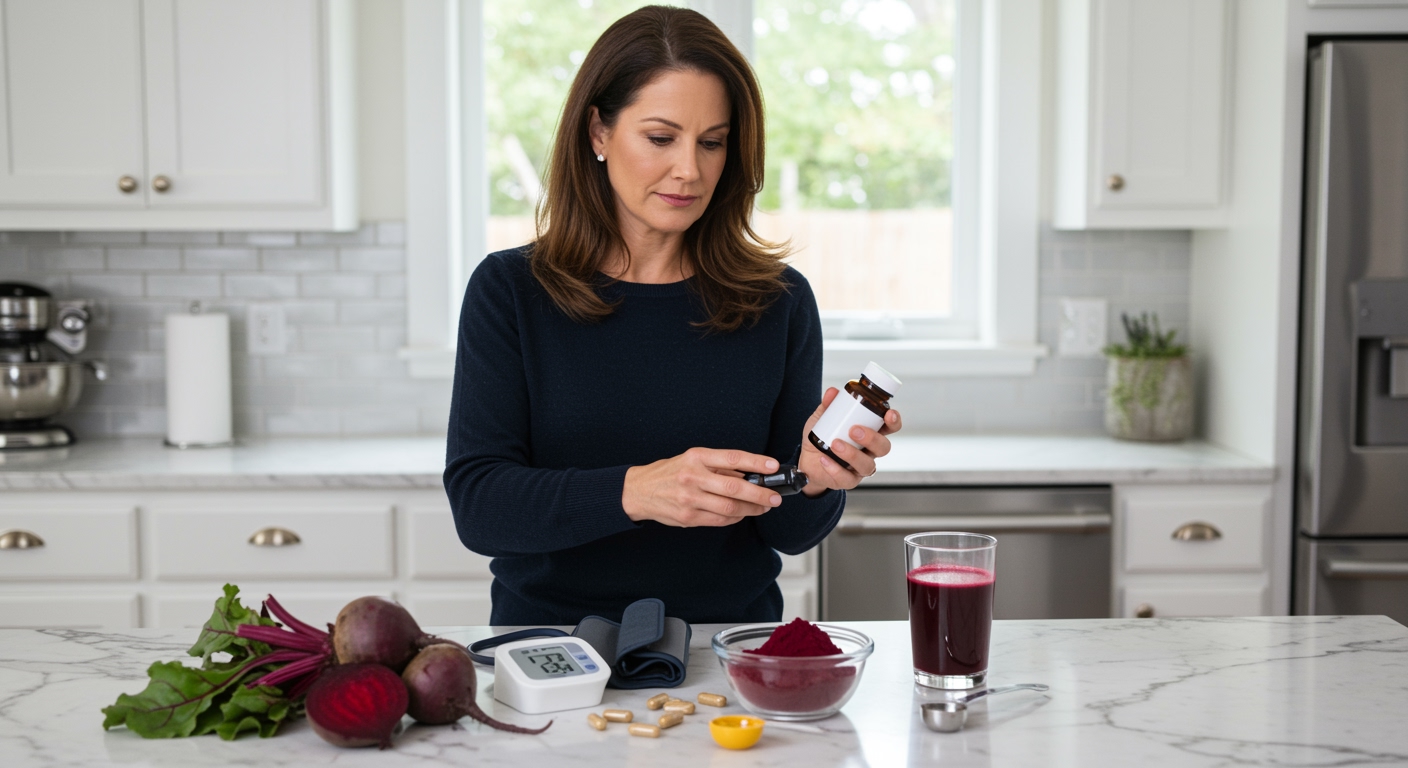✪ Key Takeaway: Cherimoya can help lower blood pressure through its high potassium content and natural compounds that support healthy circulation.
Introduction
Your doctor just told you to watch your blood pressure, and now you are wondering if that exotic cherimoya fruit at the grocery store could actually help.
You might be asking this question because you have heard conflicting information about tropical fruits and their effects on cardiovascular health, or perhaps someone mentioned that cherimoya has special properties for heart health.
Hi, I am Abdur, your nutrition coach, and today I am going to explain exactly how cherimoya affects your blood pressure and whether you should include it in your heart-healthy diet.
What Makes Cherimoya Special for Blood Pressure?
Cherimoya contains an impressive 287 milligrams of potassium per 100 grams, making it a powerful ally in your fight against high blood pressure.
This potassium content works by counteracting the effects of sodium in your bloodstream, helping your kidneys flush out excess salt that causes blood vessels to constrict.
The fruit also provides magnesium, another mineral that helps relax blood vessel walls and improve circulation throughout your body.
Research shows that people who consume adequate potassium have significantly lower rates of hypertension compared to those with low potassium intake.
Beyond minerals, cherimoya contains natural compounds called flavonoids that help protect your blood vessels from inflammation and oxidative stress.
These compounds work together to create a synergistic effect that supports healthy blood pressure levels when consumed as part of a balanced diet.
✪ Fact: One medium cherimoya provides about 15% of your daily potassium needs.
How Does Potassium Actually Lower Blood Pressure?
Your body maintains a delicate balance between sodium and potassium to regulate blood pressure, and most people consume too much sodium while getting too little potassium.
When you eat cherimoya, the potassium enters your bloodstream and signals your kidneys to excrete more sodium through urine.
This process reduces the total volume of fluid in your blood vessels, which directly lowers the pressure against your artery walls.
Potassium also helps your blood vessel muscles relax, allowing them to widen and accommodate blood flow more easily.
The mechanism works at the cellular level by affecting sodium-potassium pumps in your cell membranes, which control fluid balance and nerve function.
Studies indicate that increasing potassium intake by just 1,000 milligrams daily can reduce systolic blood pressure by 3-5 mmHg in people with hypertension.
This effect becomes more pronounced when you combine potassium-rich foods like cherimoya with reduced sodium intake from processed foods.
✪ Pro Tip: Eat cherimoya with the skin removed but keep some pulp near the skin for maximum potassium content.
What About the Sugar Content in Cherimoya?
Many people worry that the natural sugars in cherimoya might negatively impact blood pressure, but this concern is largely unfounded when you eat reasonable portions.
One medium cherimoya contains about 20 grams of natural sugars, which is comparable to a medium apple or pear.
The fiber content in cherimoya slows down sugar absorption, preventing the rapid blood sugar spikes that can stress your cardiovascular system.
Unlike processed sugary foods, the natural sugars in cherimoya come packaged with vitamins, minerals, and antioxidants that support overall heart health.
Research shows that people who eat whole fruits regularly have lower blood pressure compared to those who avoid fruit due to sugar concerns.
The key is portion control and timing – eating one medium cherimoya as part of a balanced meal will not cause problematic blood sugar fluctuations.
If you have diabetes or prediabetes, monitor your blood sugar response to cherimoya and adjust portions accordingly, but do not eliminate this nutrient-dense fruit entirely.
✪ Note: The fiber in cherimoya helps stabilize blood sugar levels better than many other sweet fruits.
How Much Cherimoya Should You Eat for Blood Pressure Benefits?
The optimal amount of cherimoya for blood pressure benefits is one medium fruit (about 150-200 grams) consumed 3-4 times per week.
This frequency provides consistent potassium intake without overwhelming your system with too much natural sugar at once.
Eating cherimoya as part of your breakfast or as an afternoon snack works best because your body can utilize the nutrients effectively during active hours.
Avoid eating large amounts of cherimoya late in the evening, as the natural sugars might interfere with sleep quality in sensitive individuals.
Combine cherimoya with other potassium-rich foods like leafy greens, avocados, and beans to maximize the blood pressure lowering effects.
If you are taking blood pressure medications, particularly ACE inhibitors or potassium-sparing diuretics, consult your doctor before significantly increasing potassium intake from any source.
Remember that consistency matters more than quantity – eating smaller amounts regularly will provide better results than consuming large portions sporadically.
✪ Pro Tip: Track your blood pressure readings for two weeks after adding cherimoya to see your personal response.
Are There Any Risks or Side Effects?
Most people can safely enjoy cherimoya without any negative effects, but there are a few important considerations to keep in mind.
People with kidney disease should limit potassium intake, including from cherimoya, because damaged kidneys cannot properly regulate potassium levels in the blood.
The seeds of cherimoya contain compounds that can be toxic if consumed in large quantities, so always remove all seeds before eating the fruit.
Some individuals may experience digestive upset if they eat too much cherimoya at once, particularly if they are not used to high-fiber foods.
If you are taking blood pressure medications, monitor your readings closely when adding cherimoya to your diet, as the combined effect might lower your pressure more than expected.
Pregnant women can safely eat cherimoya in moderate amounts, but should avoid the leaves and bark of the cherimoya tree, which contain different compounds.
Start with small portions to assess your individual tolerance, and increase gradually to avoid any digestive discomfort from the fiber content.
✪ Note: Always remove cherimoya seeds completely as they contain potentially harmful compounds.
The Bottom Line
Cherimoya can indeed help lower blood pressure through its impressive potassium content and natural compounds that support cardiovascular health.
The best medicine is often the simplest – whole foods that nourish your body while supporting your health goals naturally.
I would love to hear about your experience with cherimoya or any questions you might have about incorporating this tropical fruit into your heart-healthy diet – please share your thoughts in the comments below.
References
At NutritionCrown, we use quality and credible sources to ensure our content is accurate and trustworthy. Below are the sources referenced in creating this article:
- WebMD: Health Benefits of Cherimoya
- Healthline: Cherimoya Nutrition Facts and Health Benefits
- Rupa Health: Why Cherimoya Deserves a Spot in Your Diet
- Vitabase: Relationship Between Hypertension and Cherimoya





